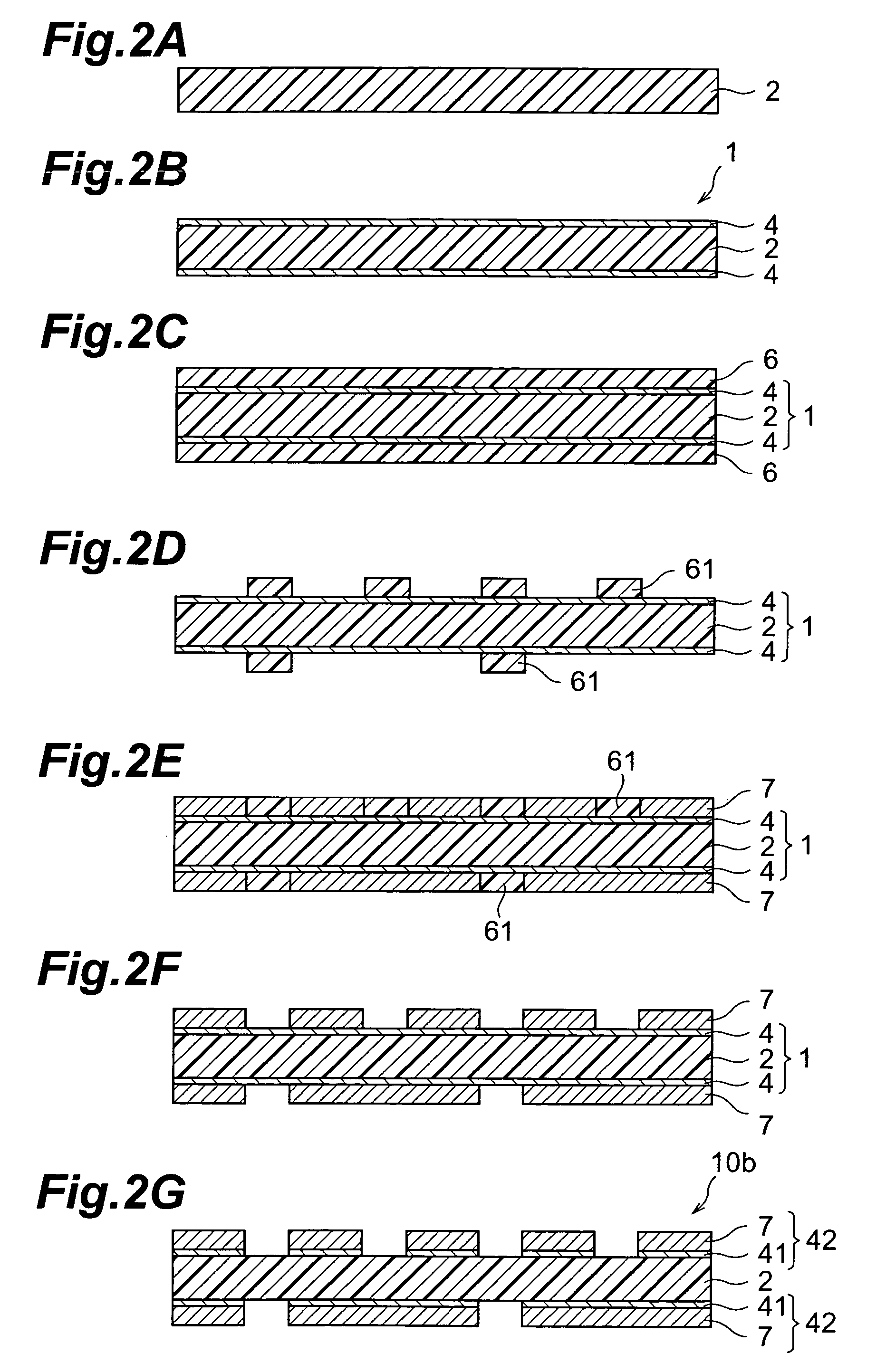Composite dielectric, composite dielectric sheet, composite dielectric paste, metal-layered composite dielectric, wiring board and multilayer wiring board
a dielectric and composite technology, applied in the direction of metal layered products, natural mineral layered products, metal layered products, etc., can solve the problems of electronic components that may disadvantageously generate heat, substrate materials that do not meet all, and the transmission loss tends to increase, etc., to achieve excellent dielectric characteristics, excellent dielectric characteristics, and high dielectric constant
- Summary
- Abstract
- Description
- Claims
- Application Information
AI Technical Summary
Benefits of technology
Problems solved by technology
Method used
Image
Examples
synthesis example 1
[0094]Into a reactor equipped with a stirrer, a torque meter, a nitrogen gas feeding tube, a thermometer and a reflux condenser, 191.8 g (1.02 mol) of 2-hydroxy-6-naphthoic acid, 63.3 g (0.34 mol) of 4,4′-dihydroxybiphenyl, 56.5 g (0.34 mol) of isophthalic acid and 191 g (1.87 mol) of acetic anhydride were introduced. The inside of the reactor was sufficiently substituted by nitrogen gas, and the temperature therein was raised to 150° C. over 15 minutes under a nitrogen gas flow. Then, while the temperature was held at 150° C., reflux was carried out for 3 hours.
[0095]After the reflux, while evaporating acetic acid, which was a flowing-out byproduct, and the unreacted part of acetic anhydride, the temperature was raised to 320° C. over 170 minutes. A point where an increase in torque was seen was considered to be the end point of reaction, and the content of the reactor in this state was taken out. Thus obtained solid was cooled to room temperature and then was pulverized. The pulve...
synthesis example 2
[0096]Into a reactor equipped with a stirrer, a torque meter, a nitrogen gas feeding tube, a thermometer and a reflux condenser, 191.8 g (1.02 mol) of 2-hydroxy-6-naphthoic acid, 63.3 g (0.34 mol) of 4,4′-dihydroxybiphenyl, 56.5 g (0.34 mol) of isophthalic acid and 191 g (1.87 mol) of acetic anhydride were introduced. The inside of the reactor was sufficiently substituted by nitrogen gas, and the temperature therein was raised to 150° C. over 15 minutes under a nitrogen gas flow. Then, while the temperature was held at 150° C., reflux was carried out for 3 hours.
[0097]After the reflux, while evaporating acetic acid, which was a flowing-out byproduct, and the unreacted part of acetic anhydride, the temperature was raised to 320° C. over 170 minutes. A point where an increase in torque was seen was considered to be the end point of reaction, and the content of the reactor in this state was taken out. Thus obtained solid was cooled to room temperature and then was pulverized. The pulve...
example 1
[0098]While being stirred at 120° C., 5 g of the aromatic liquid crystal polyester obtained in Synthesis Example 2 were added to 95 g of p-chlorophenol, and were completely dissolved therein. As a dielectric ceramic powder, 2.3 g of BaNd2Ti4O12 (manufactured by TDK Corporation, with an average particle diameter of 1.6 μm and ∈92 / Q1700) were added to the solution, and mixed / dispersed therein, so as to yield a composite dielectric paste.
PUM
| Property | Measurement | Unit |
|---|---|---|
| frequency | aaaaa | aaaaa |
| mol % | aaaaa | aaaaa |
| mol % | aaaaa | aaaaa |
Abstract
Description
Claims
Application Information
 Login to View More
Login to View More - R&D
- Intellectual Property
- Life Sciences
- Materials
- Tech Scout
- Unparalleled Data Quality
- Higher Quality Content
- 60% Fewer Hallucinations
Browse by: Latest US Patents, China's latest patents, Technical Efficacy Thesaurus, Application Domain, Technology Topic, Popular Technical Reports.
© 2025 PatSnap. All rights reserved.Legal|Privacy policy|Modern Slavery Act Transparency Statement|Sitemap|About US| Contact US: help@patsnap.com



